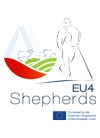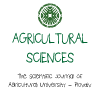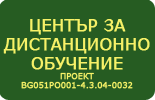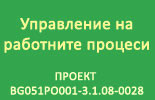Invertebrate Zoology
|
Course title: |
Invertebrate Zoology |
|
|
Course code: |
RZINZ |
|
|
ECTS: |
5 |
|
|
In-class hours |
Lectures: |
30 |
|
Laboratory work/Tutorials: |
30 |
|
|
Self-preparation hours |
Practical training: |
10 |
|
Other: |
55 |
|
|
Total hours: |
125 |
|
|
Language: |
English |
|
|
Study cycle: |
Bachelor, Master |
|
|
Semester: |
Winter & Summer |
|
|
Faculty: |
Faculty of Plant Protection and Agriecology |
|
|
Name of the lecturer(s): |
Assoc. Prof. Tatyana Bileva, PhD |
|
|
Mode of delivery: |
Face-to-face, distance learning |
|
|
Prerequisites: |
Students studying or graduated in Biological sciences |
|
|
Learning outcomes of the course unit: |
Zoology is one of the basic biological disciplines. Invertebrate Zoology deals with the study of anatomy, morphology, and systematics of invertebrates, their individual and historical development, zoological their distribution, studying the relationship of animals with other organisms and the dependence of animals on the environmental conditions of living. Although some of its sections concerning the construction, vital functions, behavior and relationships of organisms with their environment, objects are not individual animals and animal kingdom as a whole. Zoology of Invertebrates are interested in practical significance because among them there are many species directly or indirectly used by man, as well as crop pests, agents and vectors of various diseases. Data obtained as a result of zoological studies are widely used in agriculture, forestry, animal husbandry, fisheries, ecology and environmental protection. The acquisition of a set of theoretical and practical zoological knowledge are indispensable for a full presentation of the students in the years of training and their future fieldwork specialists-ecologists. Useful and harmful species studied in the special zoological disciplines, but they are a small part of the vast animal kingdom. The ever-increasing human intervention in nature leads to an increase in the number of endangered species. Zoology is a system of concepts that are taught before teaching special disciplines. It appears as general biological introduction of applied biological sciences. Without knowledge of biology, classification and geographic distribution of animals is impossible to study and determine their relevance. |
|
|
Course contents: |
Lectures 1. Subject, tasks, methods, and units of Zoology. The biological essence of life. Levels of organization of living matter. Characteristics of animals. Body. Systematic categories. 2. Kingdom Protista. Subkingdom Protozoa (Unicellular). General characteristics. Morphology, life activity. Ecological groups. Importance. The Sarcodina, Mastigophora, Coccidia, Haemosporidia, Cnidosporidia, Microspora, Ciliophora - relevance of free-living and parasitic forms. 3. Metazoa - theories about the origin of multicellular animals. Phyllum Spongia and Phylum Coelenterata - ecology, distribution and relevance of some representatives. 4. Vermes (Worms). Platyhelminthes, Nemathelminthes, Annelida. General characteristics. The most important representatives of worms - parasites of vertebrates and man. Life cycles and sanitary significance. Ecology, distribution and relevance of free-form. 5.Phylum Arthropoda (Arthropods). Characteristics. Phylogenetic importance of the transition to a terrestrial lifestyle. Overview of the class Crustacea, Arachnida, Myriapoda and Insecta. Biology and practical importance - useful and harmful species. Protected species. 6. Mollusca (Mollusks). General characteristics. Biology and ecology of harmful species Gastropoda. Snails - intermediate hosts of helminths. Lamellibranchia and Cephalopoda - biology, ecology, distribution and practical importance. Aquaculture. 7. Echinodermata. |
|
|
Recommended or required reading: |
1. Zoology, Miller-Harley, 5 th editition, 2001, The Mc Graw-Hill Companies; 2. Zoology, Miller-Harley, 10 th editition, 2016, The Mc Graw-Hill Companies; 3. Zoology, Maria-Dolores Garcia, 2012, ISBN 978-953-51-0360-8; DOI: 10.5772/2212; 4. Meet the Invertebrates: Anemones, Octopuses, Spiders, Ants and others. Katharine Rogers, 2014, ISBN: 97811311443557. 5. Integrated principles of Zoology, 14 edition , Hickman et al., 2008, www.mhhe.com 6. A text-book of Agricultural Zoology, Fred Theobald, 2010, www.worldLibrary.net 7. Outlines of General Zoology, 2010, www.worldLibrary.net; 8. The principles of Applied Zoology, Robert Arnold Wardle, 1929, Longmans, Green and Co. 9. Online Dictionary of Invertebrate Zoology: Complete work, 2005, http://digitalcommons.unl.edu/... |
|
|
Planned learning activities and teaching methods: |
Monological explanation (lecture, presentation,briefing, tutorials), Dialogue methods(conversation,discussion) Lectures and seminars are conducted according to generally accepted requirements, maximum use of available technics ( microscopes and multimedia) and independent work by zoological material. |
|
|
Assessment methods and criteria: |
Exercises evaluation and written exam. The exercises are certified in the case of records of all issues. The current assessment is based on current control after each exercise, practical exam and summarizing test on the lecture material. The rating is a six-point scale and a collection of the practical and theoretical exams. |
|
 - Events on the occasion of the 80th anniversary of AU
- Events on the occasion of the 80th anniversary of AU











